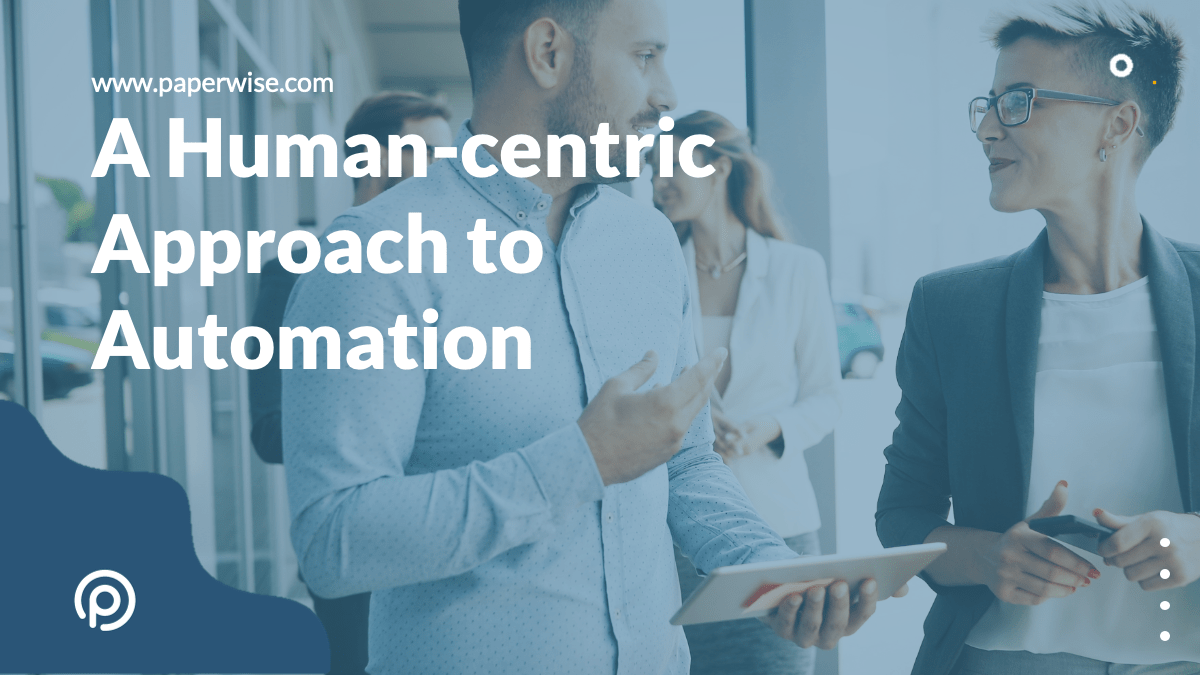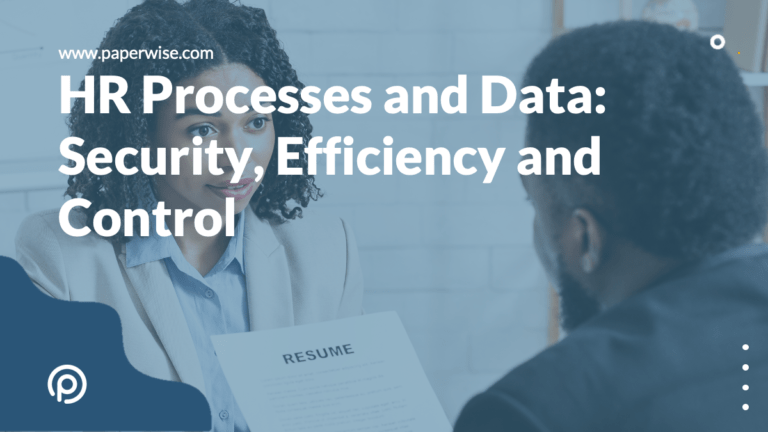From the discovery of fire to the inventions of the wheel, plow, printing press, steam engine and assembly line manufacturing, humans have always sought to better their lives and ease their workload through technology. While much of the drive toward workflow automation has to do with the high return on investment and cost effectiveness of solutions, at Paperwise we’ve always taken a human-centric approach to automation.
Automation is About Actualizing Human Possibilities
In popular culture, automation often has a negative connotation, from putting people out of work to robots run amok. Automation is about actualizing human possibilities. Much of the work we do today doesn’t take full advantage of our capabilities as creative problem solvers. Automation is about replacing the meaningless work so we can spend more time using our talents to their fullest extent.
Rethinking Workflows
Almost all workflows share the following features:
- New information enters the system
- That information must be, indexed categorized, filed, stored, and shared.
- Business rules are considered and applied.
- A human must decide about the new information and its impact on your organization.
- More business rules are applied.
- The decision will be categorized, shared, and acted upon.
In most cases, automation serves to remove the manual and repetitive steps around the human elements of the workflow so that your employees can focus on the most important part of their job: making important decisions.
For example, in AP invoice processing:
- New information: A vendor invoice arrives. Instead of manually receiving and reading the document, the invoice can be accepted electronically or scanned allowing smart OCR to extract information.
- Indexing: That invoice must be checked against other information in your system, existing purchase orders, vendor records and then manually entered into your system. Automation can handle 90% of this work through smart OCR and integration to your management and accounting systems.
- Business rules: Does the invoice amount match the PO or is it in a tolerance level to pay? If so, automation readies payment saving human time for more important tasks.
- Decisions: When there is a larger conflict that can’t be resolved – wrong amounts, scam invoices, missing approvals, changes in vendor terms, etc. – it’s time for a human to step in and apply their time to making decisions that protect your business and your vendor relationships.
- Business rules: how invoices get paid and entered are easily automated in ways that follow your company guidelines and without intervention.
- Sharing decisions: Automation makes it easy to send a document to a colleague for more review, automatically send out an email to a vendor and even fire off the invoicing process inside your accounting system.
Or consider something as seemingly simple as new hire interviews:
- New information: A new applicant enters your system and must be interviewed by several team members.
- Indexing: Whether you have an HR management system, you still must deal with resumes, letters, notes, and certifications. Automation keeps track of these for every candidate.
- Business rules: Were the proper meetings scheduled, the right questions asked, notes taken, and complete documentation of the process followed?
- Decisions: Obviously when it comes to interviews, the human element is the most important and more time should be spent with the interview than the administration that surrounds it.
- Business rules: Was corporate governance followed all the way through the hiring process?
- Sharing decisions: How do you share notes, decisions and follow up with applicants? Automation greatly simplifies the process and keeps you consistent.
A Human-centered and Scalable Approach
In both cases above, the return on investment is enormous:
- Studies show that AP invoice automation cuts approximately 80% of the cost out of your company.
- Our own clients have shown that new employee hiring and onboarding saves 20 hours per HR employee per week.
But the most important impact on your business is applying the human mind to the most important problems you face. With automation, your journey of improvement never really stops. Automation streamlines repetitive and meaningless work, while humans focus on the new insights and innovations that drive your company forward. Employees are happier, customers are better served, and your efficiency increases across the board.




